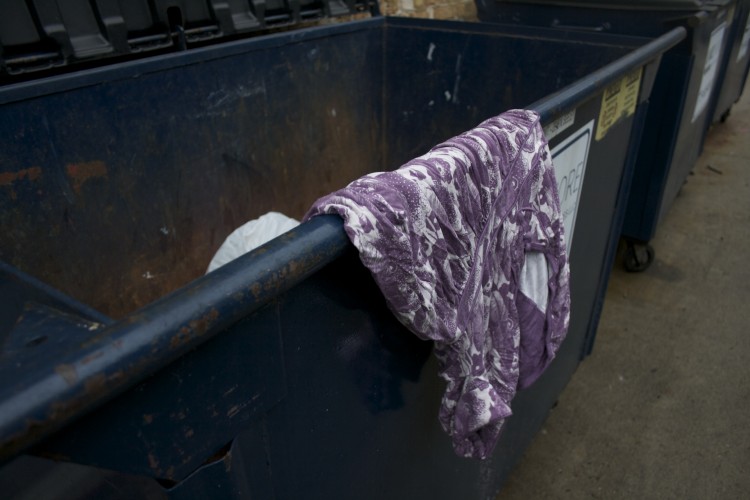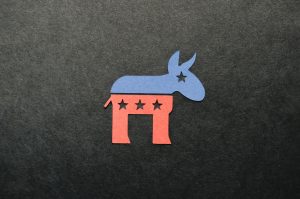News, ideas and trends spread more quickly today than ever thanks to the widespread use of the Internet.
Especially in the fashion world, this has changed the way corporations operate. When consumers can live-stream New York fashion week from home, they want the physical manifestations of new trends delivered to them as quickly as possible.
The invention of “fast fashion” has made this a reality.
Fast fashion retailers produce clothing cheaply and quickly in order to put new styles on the market as soon as possible. Retail giants H&M and Zara, for example, can take a new design from sketch to production in a matter of weeks. Fast fashion has made trends accessible to people of all income levels, but some fashion industry professionals argue that it has created an unrealistic view of how much it costs to make clothing.
“I believe in the longevity of a product that can withstand time; a product that isn’t being so quickly disposed of for the next best thing,” said Chicago fashion designer Shelby Steiner. “Fast fashion has unfortunately created a very temporary way of thinking.”
Steiner graduated from Columbia College Chicago in May 2012. She is now a designer-in-residence at the Fashion Incubator at Macy’s on State Street, which provides six emerging Chicago-based designers with resources such as workspace, curriculum and mentoring to help launch their careers in fashion.
Steiner uses manufacturers in Chicago to produce the clothing for her spring and fall collections. She says one garment can take anywhere from 34-160 hours to construct from start to finish. Her pieces sell for between $120 and $530.
“[Fast fashion] gives people the mentality that you can make a shirt for $13, and that if you charge $2,000 for a shirt that that’s unrealistic, when the people who make the $2,000 shirt are paying all their workers, and they’re putting quality and time into their garments,” said Jax Sirotiak, a junior Fashion Design major at Columbia College.
Steiner is not opposed to having her collection manufactured overseas but quality and ethics are foremost to her.
“I want to be as in control of the process as possible and to make sure the factory is following labor laws and paying fair wages,” Steiner said. “Craftsmanship is also incredibly important.”
The minimum wage in Bangladesh, the world’s second largest clothing exporter after China, is $67 a month. It was raised earlier this month from $38 in response to the collapse of the Rana Plaza factory building in April that killed 1,100 garment workers.

Many fast fashion consumers do not connect the purchases they make with such tragedies.
“I don’t really look at where clothing is made,” said Jaas Diaz, a sales associate at Akira. I just look at the quality and price.”
Patrick Blanford, a sales representative for Anna George Salon and Spa, said that he would rather buy clothing that is made in the U.S., but that cost is the main factor he considers when shopping.
“Because I have a family that I support, it’s more of an economic decision for me,” said Blanford.
Natalie Ruttan-Stack, manager of the Fashion Studio at Columbia College, believes that fast fashion is harmful to garment manufacturers, but understands that for many consumers it is the only way to access new trends.
“It’s hard because you have to think from a consumer point of view that people of every economic level do deserve good design,” said Ruttan-Stack. “So how do we tackle that? That’s still something that is valid.”
However, clothing is one of the few items that has become less expensive in the last 50 years.
“Clothing accounts for just 3.4 percent of the family budget, down from 8.8 percent in 1960. These costs have fallen consistently over the last 50 years, a trend that seems likely to continue, on account of more efficient manufacturing and cheaper products from overseas,” wrote Business Correspondent Rick Newman in an article for U.S. News and World Report in 2011.

Consumers no longer see clothing as an investment. The availability of inexpensive clothing has turned it into a disposable, one-use item.
A Cambridge University study reports that in 2006, people were buying a third more clothing than they were in 2002 and had four times more clothing items in their closet as they did in 1980. People are also disposing of larger amounts of clothing each year.
“We have to have the mentality of spending money on one pair of shoes that will last a whole year instead of six that last a month each,” said Sirotiak.
Sirotiak says that she has begun thrifting all of her clothing because it is inexpensive, better for the environment and keeps money in the American market.
“If people can’t afford better, shop where you’re going to shop. Sometimes it’s about how you shop and not where you shop. So if you buy something cheap that doesn’t mean that you have to have a disposable attitude to it … or a disposable relationship to it,” Elizabeth Cline, author of Overdressed: The Shockingly High Cost of Cheap Fashion, said in an interview with National Public Radio in May.
Designer clothing is significantly more expensive than fast fashion, but Ruttan-Stack argued that there are rewards to spending more on a quality garment.
[pullquote]“I love supporting my friends and designers around here. It feels really positive knowing that you’re helping somebody sustain a business,” said Ruttan-Stack. “Especially from a teaching standpoint, you feel protective of your students. You want to know that someone is purchasing their work and nurturing their career.” [/pullquote]
[/pullquote]













Be First to Comment